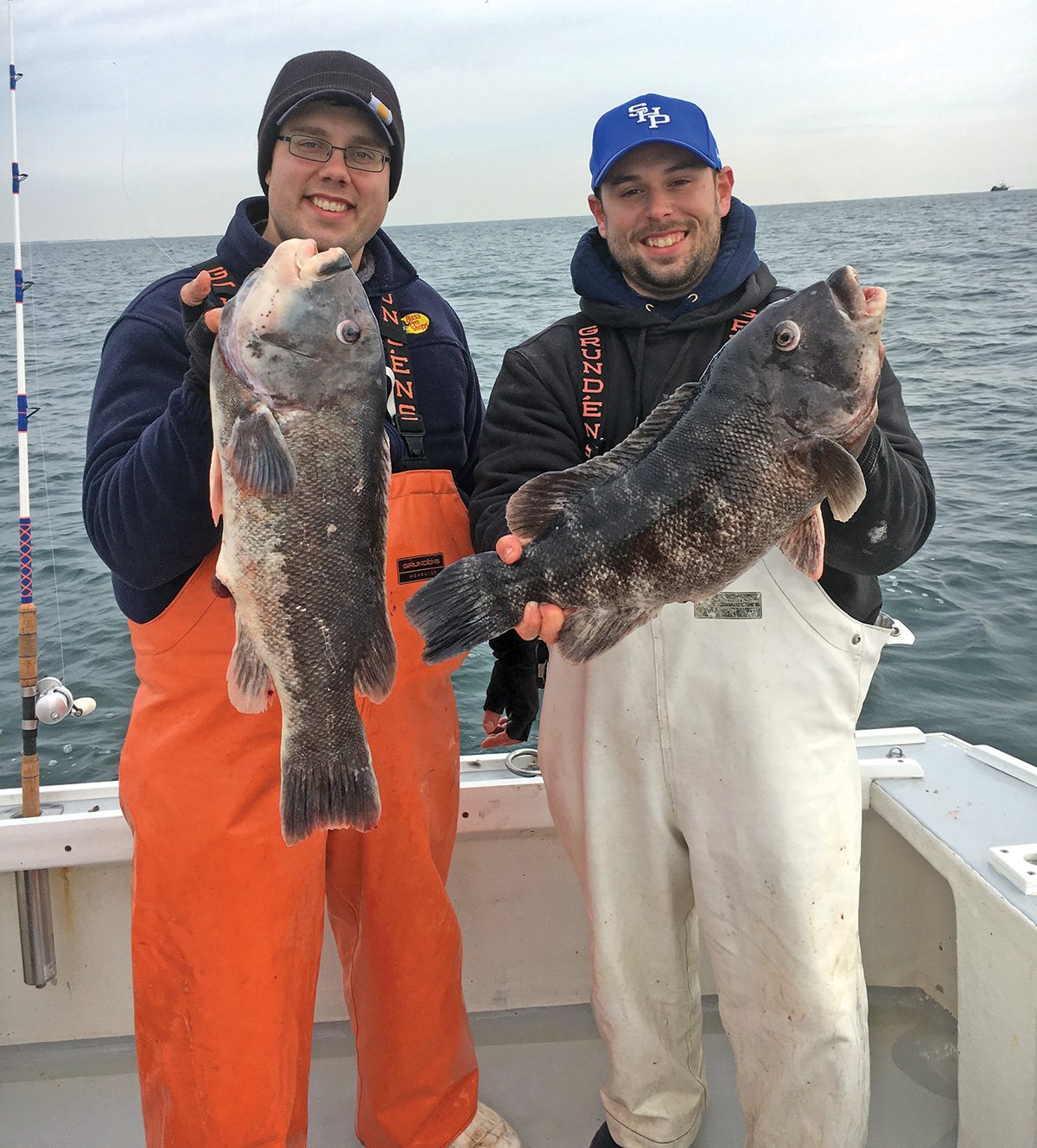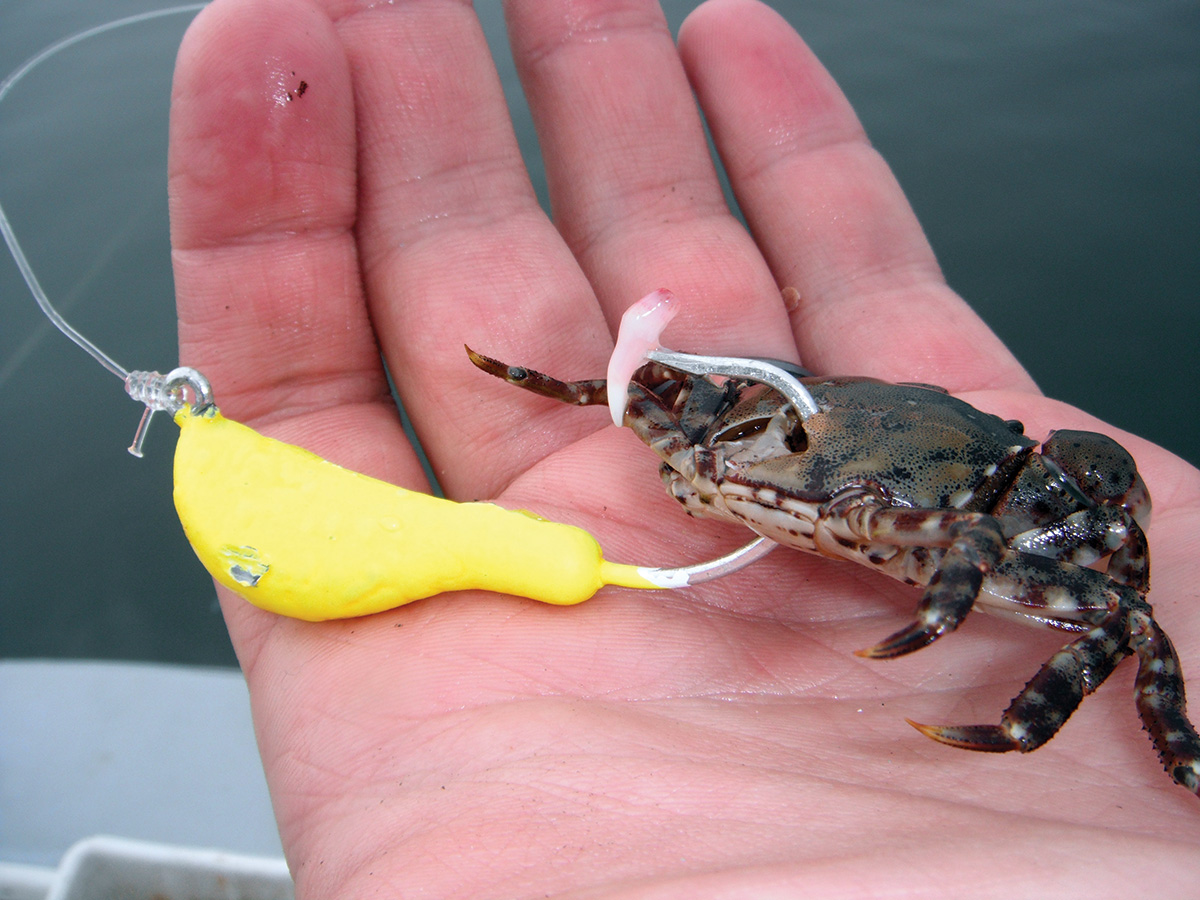
Avoid these common mistakes of blackfish anglers and put more fish in your boat this fall.
Blackfishing is a lot of fun, but it can also be frustrating when you’re not catching and those around you are seemingly pulling up fish after fish. Perhaps more so than any other locally-available species, there is a fine line between just soaking a crab all day and catching some fish, but many anglers fail to understand why they fall short of their expectations on the tog grounds.
In an effort to help provide some insight into catching these tasty and hard-fighting critters, here is a look at some of the most common mistakes that blackfish anglers make while pursuing them. Get by these and watch your catch rate improve dramatically!
Improper Anchoring
Take the time to set the anchor properly so that you end up exactly where you want to be when your first drop is sent down deep. Is where you ended up exactly where you intended? If not, take the time to re-set. Blackfishing is a game of precision, and a little extra time spent upfront in setting the anchor can make all the difference in the world when it comes to the results. You’ll need to take such factors as tide stage, current and wind into account to get the perfect set, and keep an eye to your positioning as things change throughout the day.
Fishing Without Bait
Not checking your bait frequently enough seems so simple, yet many make this mistake. You can get wiped out quickly between bergalls and small tog, and if you’re no longer getting bites there is a good chance that you’ve been cleaned. This is even more prevalent when fishing soft baits like clams, worms and hermit crabs, but it happens pretty fast with regular crab baits, too. If you think your bait was taken, reel up and check. It’s hard to catch them on a bare hook, no matter how good you are!
Bad Hook-Sets
Blackfish have tough, leathery lips, and it can sometimes take a lot of effort to get a good hook-set, especially in deep water. Set hard and keep steady pressure on the fish from start to finish. There is an art to the proper hook-set as it’s generally a combination of slow rise followed by a sharp snap. This is very basic but extremely important.
Failure to Move
When the action slows down, some anglers are too hesitant to haul anchor and move to a new spot or even readjust their positioning. Did you swing off the spot with a change in the wind or tide? Did the spot simply dry up? Understanding why your bites stopped is the key. Moves don’t have to be far and may only be a matter of letting out a little additional anchor line to settle over some new structure.
Not Dressing the Part
This might seem like it would have little effect on how well you fill the cooler, but not dressing for the conditions means trips that are often cut short and less fish in the box. Late fall often requires an angler to dress in layers and to carry a variety of clothes. While the morning might be cool, mid-day can often warm up on a clear day, but it doesn’t take much to kick up some cool wind. Splash/rain gear is mandatory; that cool breeze will feel even colder if you took a wave on the ride out and weren’t wearing a slicker and bib pants.
Fishing in Crowds
Anglers often follow other boats instead of searching out their own spots, and this is no more prevalent than with blackfish anglers. As mentioned above, this is a game of precision and you want to be right over whatever structure is holding the fish. Simply anchoring next to someone catching doesn’t provide as much success as it might in other fisheries since blackfish hot spots can be small. Further, fishing popular spots means that you’re fishing on fewer fish as the keepers can get picked over rather quickly. The later in the season you fish, the more you are likely going to have to find “fresh” structure to find success.

Light Leaders
Using too light of a leader is a recipe for blackfish failure. Blackfish are found in and around structure that’s just teeming with ways to break you off. For the most part blackfish are not leader shy, so use the heaviest line that you can and change it at the first sign of damage.
Bad Bait
Avoid bait that is old and off-putting. Crabs and clams can both go bad and stink it up with the rest of them. Keep the bait appealing to the fish; just because they’re bottom fish doesn’t mean they eat rotten food. Keeping your bait fresh also means not cutting too many crabs at a time, letting them drain out of all the juices and “goop” found inside their shells, which serves to attract a tog to your bait in the first place.
Fighting the Wind
Find several different spots that offer differing protection from the seas if winds are from different directions. The fall can be windy, and if you don’t have a spot that offers some sea protection for that wind you might have to pass up a few more days fishing. Have one that protects you on a northerly and one that protects you from a strong southwesterly and you’ll be able to fish one or the other most days, for example.
Not Packing Enough Tackle
Blackfish live in some tight places, and you’re going to lose some terminal tackle if you’re fishing in the right spots. Not having a supply to replace it may eliminate you from the game. Be prepared with extra hooks, leaders, swivels and weights. Also, be sure to tie up a bunch of rigs in advance of your trip rather than wasting time tying rigs on the fly in the middle of a good bite. Any down time is bad time.
Editor’s Bonus: Dull Hooks
Another simple to fix, yet common error seen with many blackfish anglers, is the use of dull hooks. This can be alleviated by keeping a hook file handy and touching up the hook point every few drops, or simply by changing out that hook as soon as it shows use. You’re going to come into contact with that craggily blackfish-holding structure quite often, and it’s usually the hook that pays the price.




